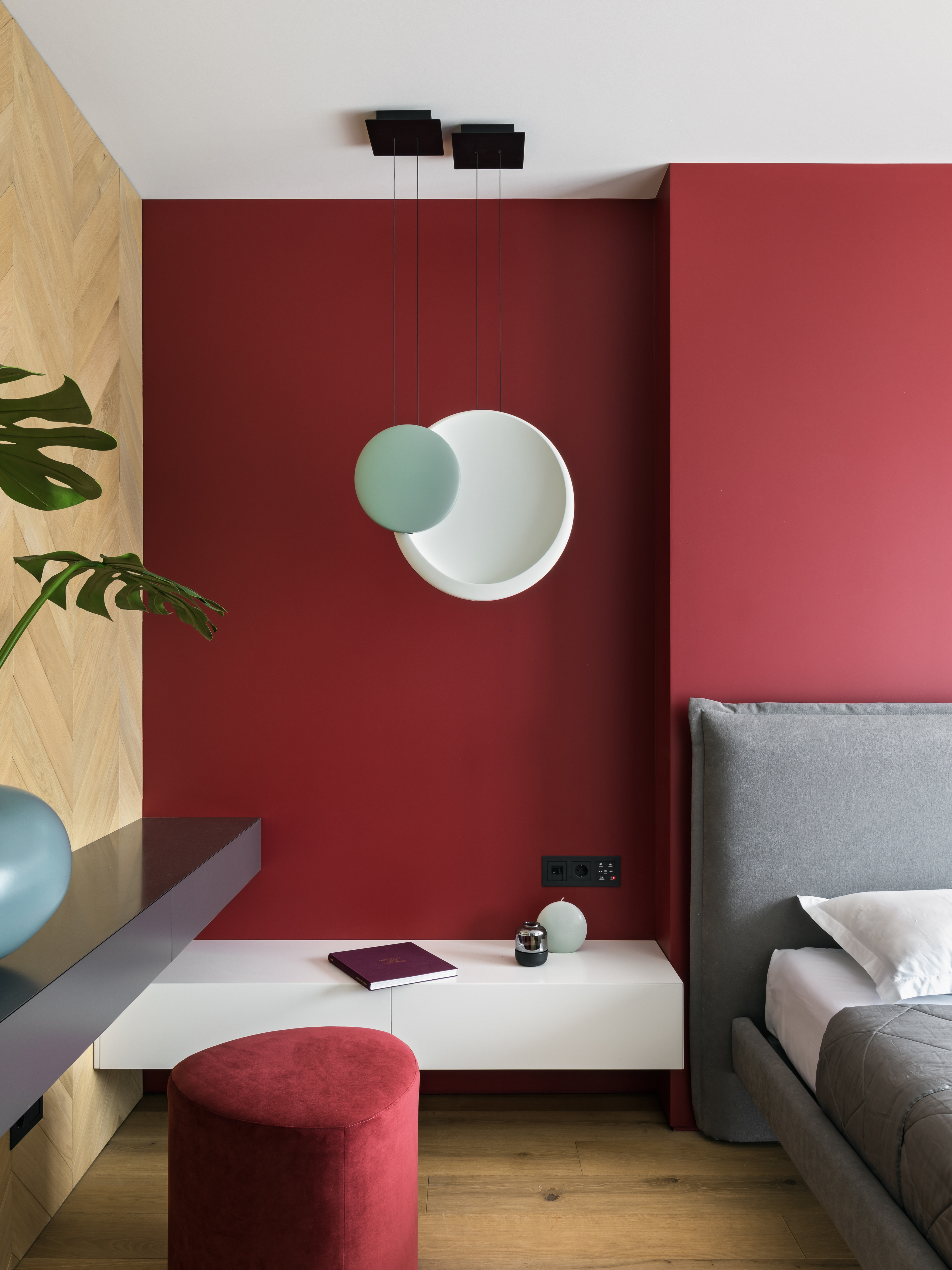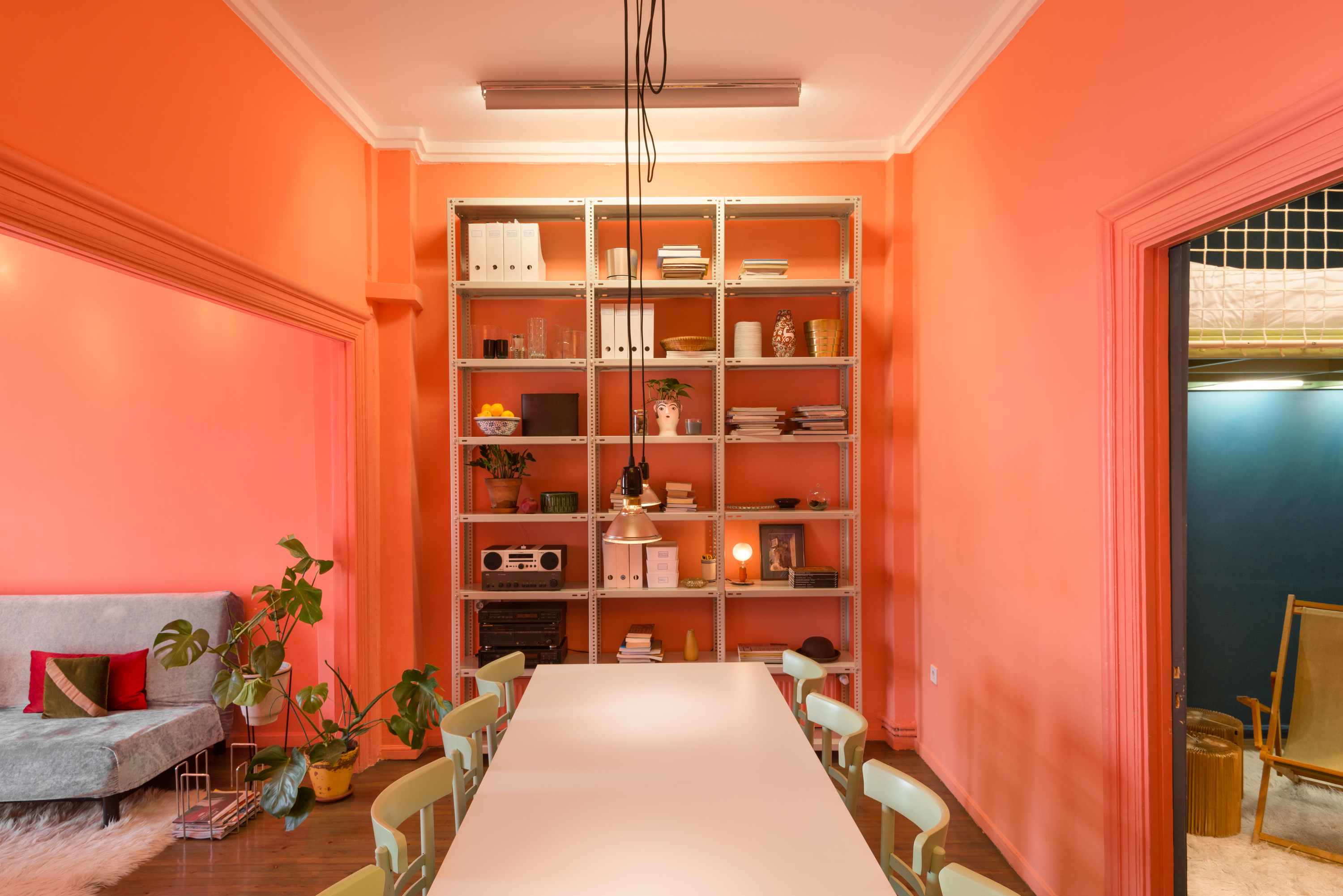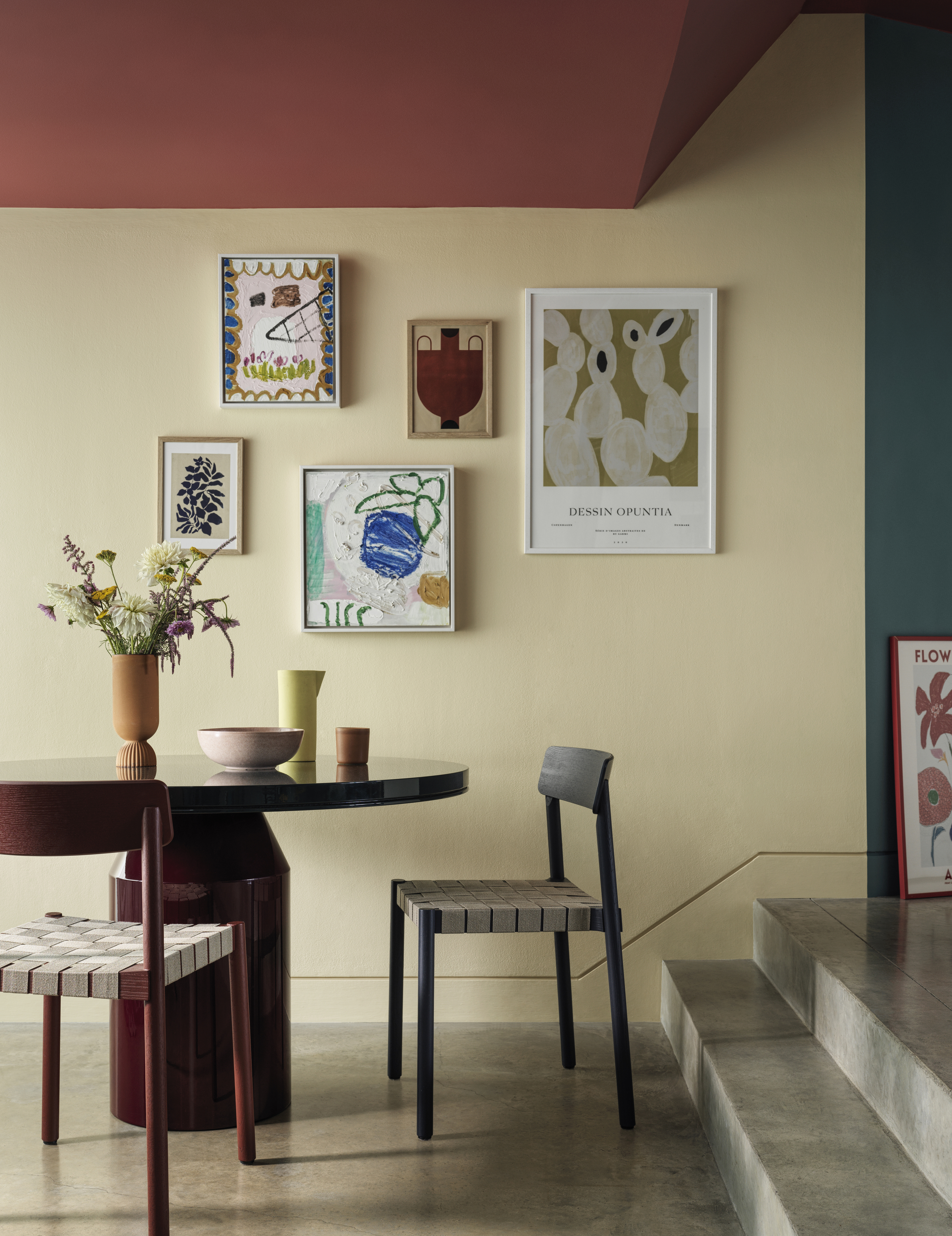Color rules – these are the ideas interior designers swear by for choosing a palette
Take a quick lesson in color rules from designers and experts to understand how to use different tones and pairings in your home


Are there really color rules in interior design? There really is no such thing as a “correct” palette, but if you're less confident with color, there are a few things you should consider before introducing them into your space. After all, it's always best to be equipped with knowledge on how to pair different shades together, and how much of a color to use in any one room.
When it comes to interior design, color rules teach you how not to create an explosion of hues that lead to a chaotic feel that mismatches between rooms. The rules guide you on how to choose shades, balance them and go for the best colors for your spaces.
From color consultants to interior designers, we asked top experts to share their tips for making color cohesive throughout the home.
8 color rules interior designers swear by
It's important to say that color doesn't standalone in interior design. 'We generally look at color as another variable along with texture, material mix, and pattern that will create the overall feel of a home,' says Kristen Peña of K Interiors. 'We believe that sometimes you need color and sometimes a mix of materials, textures, and patterns to create the vision you are going for without the use of many colors.'
These all have an effect on how these color rules play out.
1. Consider the 60-30-10 rule

The 60-30-10 rule is a classic design staple to keep in mind – a great stepping stone to creating a scheme. Essentially, it means separating your palette with 60 percent as the main color, seen on sofas, coffee tables, rugs, or anything large and central to the room. 30 percent is the secondary color that takes over the soft furnishings like the curtains, bed linens, an accent chair, and so on. Finally, the 10 percent is meant to give balance to the colors used in any space, used on smaller elements like a lamp, cushions, artwork.
This is especially useful to those who want a lot of color in their home but aren't sure of how to balance them. Interestingly, if you prefer a monochromatic color scheme, this rule can apply too. Your main, secondary, and accent colors, can be varying shades of the same hue (say black or grey), rather than three separate colors.
The Livingetc newsletters are your inside source for what’s shaping interiors now - and what’s next. Discover trend forecasts, smart style ideas, and curated shopping inspiration that brings design to life. Subscribe today and stay ahead of the curve.
2. Choose a color mood

While the idea of having a colorful home seems tempting, zeroing in on a color scheme may perhaps feel like the hardest task. How do you begin? What color should you choose and why?
'Before diving into choosing colors for your home, take stock of hues that you gravitate towards,' says Molly Torres Portnof, founder of DATE Interiors. 'Look to nature, art, clothes, and accessories for inspiration. Once you have a general color scheme, use fabric samples and paint decks to understand how the colors you like work together in a physical space. It's important to test colors in person because the amount of natural light in your space is a big factor in what works best.'
'Decide how you'd like your home to feel: blues and neutrals tend to be soothing, while reds and saturated colors can feel more dramatic,' Molly continues. 'Establishing consistency and a flow between different rooms is also important. While each room can look and feel different, it's always a good idea to tie the overall spaces together with color. This can be accomplished by using the same trim color throughout the home or using a color on the walls in one room and using that same color in a rug in the next room.'
Another good point to keep in mind as per color theory is that in a predominantly hot climate, you might want to avoid or use less warm hues and cooler neutrals. If you live someplace that tends to be cloudy, cool, and rainy, then layering several warm hues in different shades can give your interior a cozy feeling.
3. Use the color wheel for color pairings

Pairing different furnishings or wall color combinations can feel daunting. Does red go with green? Would a blue wall go with a pink sofa? A great way to overcome this issue is by looking at the color wheel. Complementary colors are the ones that are on opposite sides of the wheel and provide high contrast and high-impact visuals. The ones that are side by side are analogous and need a little more care and attention, else the scheme can seem too overwhelming.
'Opt for tonal hues of the same color, choose contrasting, complementary colors from the opposite sides of the color wheel or use colors that sit next to each other on the color wheel,' says Chelsea Clark, head of brand at Lust Home. 'Even if you opt for different pairing methods in different rooms, it will help you keep a sense of consistency and balance.'
4. Create a throughline between rooms

One way to ensure that a color scheme flows from room to room is to limit yourself to hues in the same temperature family. So, you could consider all warm palettes of reds and oranges and yellows or a cool scheme of greys, greens, and blues. You could also go for one or two colors and then use variations of it, so if you're choosing a navy living room color scheme, then you could introduce grey-blue, a pure blue, and an indigo as you move from room to room.
'When creating a color palette for your home, you want to use and blend the chosen colors sporadically in every room so that it hangs together in its entirety,' says Natalie Tredgett of Natalie Tredgett Design. 'The starting point could be anything with a variety of complex colors, say a painting, a fashion designer's season, a movie, a body of work that works together and has a variety of color to choose from. You then choose the principal color for each room and apply accents found within the palette throughout. When it comes to hues, this allows a home to work from the bottom corner to the top.'
'If you are choosing two colors, the simplest way is to keep to tones of the same basic shade, like a pale grey-green with a deeper olive,' says Justyna Korczynska of Crown. 'Another is to choose a soft and stronger color that has a similar underlying hue, for example, a warm taupe with soft terracotta, or the colder hues of a cool off-white with a deep turquoise.'
6. Choose between a warm or cool color scheme

The temperature of color affects how it's perceived, and this is where cool and warm color schemes come into play. Essentially, the basic color wheel is split into warm and cool tones. The warm half comprises red through yellow-green, and the cool half runs from green through red-violet.
Warm colors tend to advance, which means they draw in space, often making an excessively large room feel smaller or more intimate. If in a room you want certain elements to feel closer and more drawn in, paint them in warmer colors. The warmest tone on the color wheel is red, and the last stop on the cool side of the wheel is violet-red.
Cool colors are known to create a calmer and smoother scheme. While warm colors connote more to heat or sunshine, cool colors remind you of water and sky. As opposed to warm tones, the cool ones recede, making a space appear larger. So, if you live in a small apartment, then perhaps choosing a cooler paint color might be in your best interest. Colors such as blue, green, and light purple usually signify cool tones.
When dealing with warm and cool colors, no rule says you should use only one and not the other. Feel free to use cozy, warm colors for the dominant scheme and add a few elements that incorporate cool colors. A little bit of balance and contrast will go a long way in your home's scheme.
Another important factor to consider is the effect light has on color. Lighter or cooler colors reflect more light than darker, warmer colors. If you want to brighten up a space, choose a lighter, subtler hue that has more white, cream, or beige in it. To tone down a room that gets a lot of light, consider colors that have browns, blacks, or reds in them.
7. Don't discount clashing colors

The basic color wheel can teach us a lot about the relationship between different hues. When you study it closely, you see that there are colors opposite each other, and similar tones side by side. Opposing colors are said to be complementary colors, and teach us how to use clashing colors that look effective and eye-catching. For instance, orange and blue are opposites, and using them will help create a striking interior.
An interesting variation to complementary tones is the split complement. Essentially, instead of simply taking two opposing hues, so for instance green and red, you veer to the right or left of the color wheel, and bring in a bit of close-by hues to the direct opposite, in this case, orange and purple. Green, orange, and purple are split complements.
Colors that sit next to one another on the color wheel are analogous hues. These are those instantly balanced hues because they tend to share similar tones. So, yellow, yellow-green, and green can make up an analogous color scheme. Usually, in analogous schemes, it's best to choose one dominating color, and pepper the rest in subtler ways.
Are there any color rules for a living room?

'For the living room, I’d say there are no rules for colors,' says Jude Stewart, a design writer and author of the book ROY G. BIV: An Exceedingly Surprising Book About Color. 'Living rooms are for the living. Choose the color palette that makes you feel most comfortable and alive. I love color and therefore am a big fan of bold palettes. My living room includes two brightly patterned Turkish rugs in pink, red, and orange, paired with a blue leather sofa and brightly colored accent pillows. There’s a chartreuse armchair in one corner and a zillion multi-colored books lining the walls, held in blond-wood shelving. This room looks great in daylight as well as with the lights turned downward and evening drinks poured.'
If you don't or can't use wall paints then a less expensive way to introduce dramatic color than purchasing a couch or rug in a deep tone is through accessories. For a smart, modern living room color scheme, bring in vibrant artworks, bright lamps, or pretty urns and vases.
What about for a bedroom?

'The right color for any adult's bedroom suits what we all typically do in this room: sleep, dream and then rest and awaken refreshed for the day,' says Jude. 'Colors that promote a sense of restoration and calm are great. My bedroom is painted a bone white that reflects natural light beautifully at different hours of the day; this is contrasted with accents of hot pink, chartreuse, and pale blue. Other great colors that promote restoration and a state of active calm are greens in various shades and blues that don’t trend too dark, but you should choose any color you love and dial it down from its loudest shade and that might be the perfect color for you.'
'I also like a friendly mid-tone grey with bright color accents. It might be tempting to choose colors that are too sleepy or dark because they help you sleep better, but that choice might make you feel groggy in the mornings when you’re trying to wake up. Consider how a color wears from day into night, sleep into wakefulness.'
What color rules apply to a kids' bedroom?

Kids are usually high-energy beings who tend to get stimulated by their immediate environment, sounds, and even colors. If you’re decorating a kid's bedroom or a shared bedroom, choose hues that are more calming and soothing, so that it's easier for them to fall asleep at night or focus on work or play.
Pastel yellows, soft blues, aqua greens, and warm pinks are good ones to experiment with. You can always add brighter tones on top of these colors to inject a bit more fun as your child grows.
'A child’s bedroom obeys similar rules, but that kind of room has slightly different uses,' says Jude. 'It’s also for sleeping, dreaming, and rest, but many children play and hang out in their rooms for quiet time alone or with friends. It’s a haven in the house that’s all theirs. A kid’s bedroom should be colored to provide a similar sense of restoration and active calm but also speak to a child’s sense of self. I am big on moving past gendered colors like pinks and blues for kids’ rooms. Why limit your child to this narrow palette when there’s the whole rainbow to explore?'
Color rules to consider for a bathroom

Usually, commitment to color is regaled to the living room or bedroom, leaving bathrooms muted, with pops of hues making an appearance merely through accessories. When considering master bathroom ideas, look at your home decor for inspiration. Perhaps paint the dominating color in your living room in the bathroom as well.
When deciding on the color scheme in this space, choose a layering of three tones. Go for light tones as the central color scheme (walls, ceiling), layer another lighter tone (furniture, fixtures), and keep the boldest shades to the minimum (vanity, feature wall). Don't use the same color more than thrice in this space.
Generally, colors like orange, red and yellow can be uplifting and energizing. If you want to make a statement, choose contrasting tones. If not through paints or wallpaper, use contrasting colors with your bathroom fittings or furniture.
What are color harmony rules?

Color harmony refers to certain aesthetically pleasing color combinations; essentially contrasts that look balanced and delightful. Within this, you could choose complementary colors, split-complementary tones, triads, analogous hues, and more, all that teach us how to use different hues together.
Of course, one important consideration to keep in mind is that while in theory, color combinations and principles may provide some guidance on how to create a palette, they don't always work in practical applications. This is because several external factors also contribute to how a color combo will look in a space. From lighting, fabrics, and size of space to others, a lot depends on how colors come together in a room.
Are there any rules for choosing paint finishes?

Onward on this journey of colors is choosing the right paint finishes. There are largely five main kinds – eggshell, matte, satin, semi-gloss, and high-gloss. Depending on the type of look you prefer for your walls, the lighting conditions in the house, and the size of the space, you can go for any of these. Keep in mind, that all these paint finishes have a strong personality and create a unique interior.
'There are two things to must consider when choosing paint,' says Justyna. 'Firstly what style do you want? Is it modern or traditional, fun or more considered? Secondly, what is the atmosphere? Clean and spacious, deep and moody, bright and breezy? Whatever your preference the choice of paint really can help fashion both style and atmosphere. For example, a range of period colors in slightly greyed tones would suit a more traditional look, whilst whites and greys with sharp accents are more modern.'
'Paint is an easy way to transform your home without breaking the bank. One great way to add character to a space is with metallic emulsions,' says Justyna. 'The shimmer-effect paint brilliantly reflects the natural sunlight but also transitions beautifully into nighttime when illuminated by soft lighting or candles. Rather than painting an entire wall, why not stencil stripes, squares, or circles onto a monochromatic base to add areas of drama and interest.'

Aditi Sharma Maheshwari started her career at The Address (The Times of India), a tabloid on interiors and art. She wrote profiles of Indian artists, designers, and architects, and covered inspiring houses and commercial properties. After four years, she moved to ELLE DECOR as a senior features writer, where she contributed to the magazine and website, and also worked alongside the events team on India Design ID — the brand’s 10-day, annual design show. She wrote across topics: from designer interviews, and house tours, to new product launches, shopping pages, and reviews. After three years, she was hired as the senior editor at Houzz. The website content focused on practical advice on decorating the home and making design feel more approachable. She created fresh series on budget buys, design hacks, and DIYs, all backed with expert advice. Equipped with sizable knowledge of the industry and with a good network, she moved to Architectural Digest (Conde Nast) as the digital editor. The publication's focus was on high-end design, and her content highlighted A-listers, starchitects, and high-concept products, all customized for an audience that loves and invests in luxury. After a two-year stint, she moved to the UK and was hired at Livingetc as a design editor. She now freelances for a variety of interiors publications.